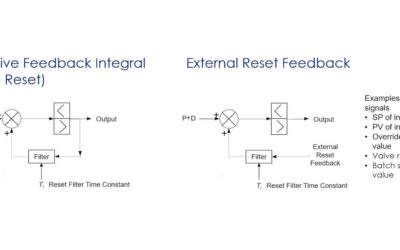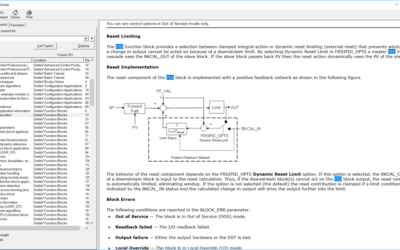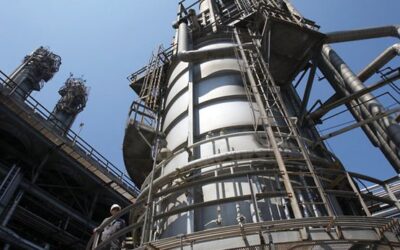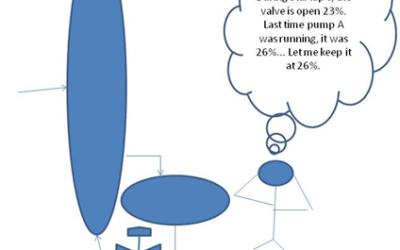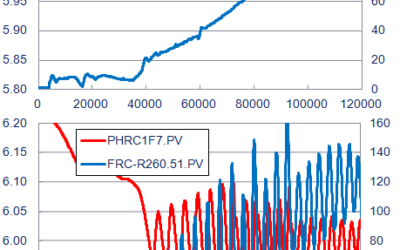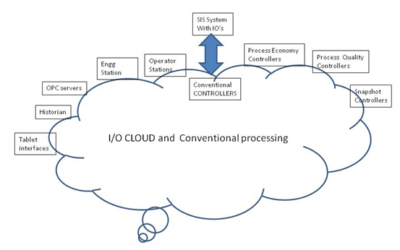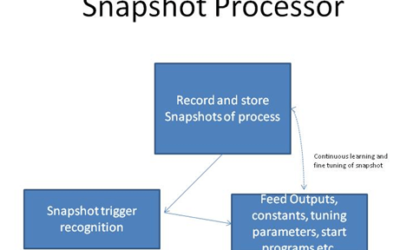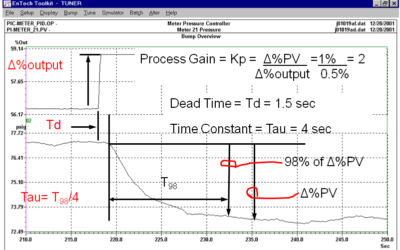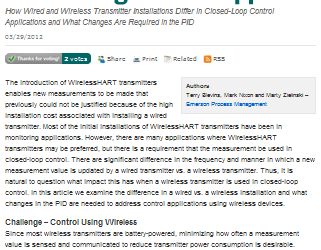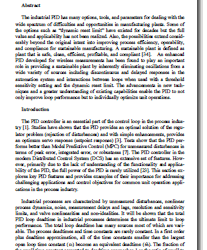At AIChE Spring21+17th GCPS, James Beall presented, An Activity Report on the Newly Formed ISA 5.9 Subcommittee on the PID Algorithm, to address the lack of no standards or technical references related to the Proportional, Integral, Derivative (PID) control algorithm.
PID algorithm
How Does PID Loop Dynamic Reset Limit Work?
In the DeltaV discussion forum in the Emerson Exchange 365 community, there is a post, Question about Dynamic reset limit and “Use PV for bkcal” options. What caught my eye was a response by Emerson’s James Beall describing dynamic reset limiting and specifically how it is performed in the DeltaV distributed control system controller.
When Tuning PID Alone is not the Answer
Proportional-Integral-Derivative (PID) control is the workhorse control algorithm for process manufacturers. When tuned properly, it seeks to move a loop's process variable (PV) to the setpoint (SP) as quickly as possible without overshoot or instability. But, in some...
Setpoint Lead-Lag Question and Answer
I wanted to share this question and answer on setpoint lead-lag, from the Mentoring Engineers discussion group in the Emerson Exchange 365 community. The question: …one of the options you recommend for eliminating overshoot at setpoint changes is using a setpoint...
A Primer on Intuitive Control
We continue our series on Cloud I/O from Emerson's Anand Iyer. Today's post is a primer on intuitive control. When we have an I/O cloud or bubbles of IO information with very less binding of the IO and a more free choice (within certain boundaries), there is an...
Getting the Converted PID Values Right
I received an interesting story from Emerson's James Beall about a process manufacturer with a process filled with many fermentors. They were being converted over from Provox control systems to DeltaV systems. pH control was a key part of the plant's fermentation...
Process Automation Systems of the Future
Emerson's Anand Iyer continues his series on Cloud I/O with his vision for what the future might hold for process automation systems. Let us look at what effect the cloud IO concept would have on the distributed control system (DCS) as we know today:The IO cloud forms...
A Primer on Snapshot Processing and Some Controller Swaps
Emerson's Anand Iyer continues his series on Cloud I/O with a look at snapshot processing and controller swaps. Once upon a time, more than a decade ago, we faced a problem on a column, which seemed to open up our minds to a wonderful world of possibilities loosely...
How to Tune Self-Regulating Control Loops
I've highlighted a few Emerson presentations for this week's ChemInnovations conference in New Orleans. Emerson's James Beall, a 30-year veteran in process control and chairman of the ISA 75.25 committee on control valve performance testing, shared his ChemInnovations...
Wireless Device-Based Control Loops
ControlGlobal.com has a great article, Addressing Control Applications Using Wireless Devices—How Wired and Wireless Transmitter Installations Differ in Closed-Loop Control Applications and What Changes Are Required in the PID, by Emerson's Terry Blevins, Mark Nixon,...
Eliminating Confusion and Misinformation with Loop Performance Equations
Back in May in a post, Industrial Applications of PID Control, I highlighted a new book ModelingAndControl.com blog's Greg McMillan was writing, PID Control in the third Millennium – Lessons Learned and New Approaches. In the post, Greg provided a free chapter for...
Wireless versus Wired Process Control Performance Analysis
I just saw a tweet about WirelessHART being used in control applications. I followed the link to a ControlGlobal.com article by Emerson's Terry Blevins and the University of Texas' Frank Seibert. The article, WirelessHART Successfully Handles Control describes how...
Keep Up to Date With the Latest News and Updates
Follow Us
We invite you to follow us on Facebook, LinkedIn, Twitter and YouTube to stay up to date on the latest news, events and innovations that will help you face and solve your toughest challenges.
Do you want to reuse or translate content?
Just post a link to the entry and send us a quick note so we can share your work. Thank you very much.
Our Global Community
Emerson Exchange 365
The opinions expressed here are the personal opinions of the authors. Content published here is not read or approved by Emerson before it is posted and does not necessarily represent the views and opinions of Emerson.
